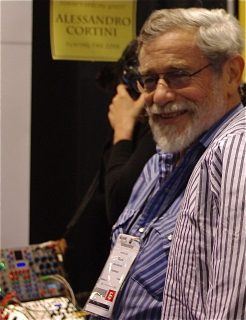
The LA Times has an interesting review of The San Francisco Tape Music Center: 1960s Counterculture and the Avant-Garde, a new book edited by David W. Bernstein.
Check out this short excerpt on Don Buchla, creator of the Buchla synthesizer:
One expects to discover little-known — sometimes painfully unknown — heroes in books like this, and Buchla is the Tape Music Center’s prime example. Gear heads and electronic composers know of him; there’s a great chance they’d be neither, if Buchla had not invented the equipment that was as vital to the center as any piece of music, given what it made possible. His creation is known as the Buchla box. To avoid having to run around from oscillator to oscillator trying to keep up pitch levels and reconcile the spatial relationships among various sound sources, Buchla found a way to house all these variables in one device. Classical music had entered the DIY age; anyone could compose, in theory, and dynamic wave shaping — one of the box’s many virtues — was as easy as twiddling a knob. Even the Hells Angels wanted in.
“They were a little bit associated with [Ken] Kesey’s bus and were involved in drug distribution,” Buchla informs Bernstein. “It all seemed fine to me. I got some interesting tapes from that source.”
A baffled co-interviewer asks Buchla if the Hells Angels were musicians.
“No, you don’t have to be a musician to make a tape,” Buchla responds, revealing one of the center’s key premises. You had to be a musician, or at least capable of thinking musically, to produce art. But this was a new age of musical expression, in which the long-sanctified precepts of classical repertory, with the conservatory and its exclusive trappings and exclusionary tendencies, came tumbling down. “I don’t know the background there,” Buchla concludes his commentary on Kesey’s motley crew. “I just showed up at the places with my instruments, took some acid, played some music.”
It looks like it should be a fascinating book.

😉 nice